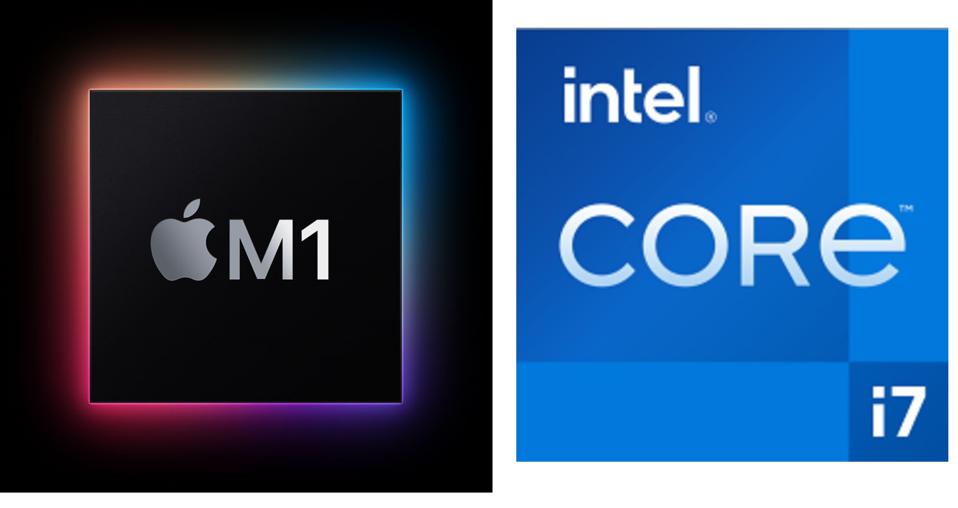10 February 2021
What has happened to Intel back in 2020?
Intel has been the dominant processor making company for decades, revolutionising its design many times leading up to what it is now. AMD, on the other hand as of 2020, had always went toe-to-toe with Intel on the mid and low range, and found themselves teetering on the edge of bankruptcy. It was apparent that Intel was at the top of their game for both the desktop and mobile market; even announcing - with their Comet lake lineup - they have created the "world's fastest" processor the i9-10900K. However, as evident with the last quarter of 2020 things have turned upside down.
The major news is that Apple has decided to break off partnership with Intel after 15 years. Apple is now confident that they could design and manufacture faster chips than intel, using ARM technology to power their new CPU chips which they call M1. The M1 chip is a reflection of Apple's long term goal to own what they produce, or as they put it "controlling the primary technologies behind the products that [they] make." It remains a strong possibility that Intel has fallen behind in their efforts to innovate as of the past decade, which has led to Apple sweeping Intel under the rug.

Then the final quarter of 2020 came with the release of AMD's new lineup of CPU processors. The Ryzen 5000 series is powered by 7nm Zen 3 architecture, and has allowed AMD to make a glorious comeback - which some might say has allowed them to upset Intel's 10th gen desktop lineup. Whether or not the Ryzen 5000 series has in fact unseated Intel is an interesting discussion, as there are many areas one has to take into consideration if one were to deem which is superior. Allow us to look at 3 of Intels desktop model types in comparison to its Ryzen 5000 counterpart. Considering the multiple areas to look at when discussing this, we have used benchmarks provided by youtube videos (which covers both gaming and application performances).
i5-10600K vs Ryzen 5 5600X
A trend that will become consistent throughout these videos is the Ryzen 5000 series beating Intel in applications (using blender, Adobe Effects and even compressing files); gaming on the other hand there isn't much difference. In fact if one were to look at other benchmark comparisons on other games such as Fortnite or PUBG - which the i5 does much better than Ryzen 5 in - the reality is that different games make each CPU work better than the other. The video explains it quite well, the fact that despite the i5 having greater clock speed - given its base and boost clock stats - it is either trumped in particular areas of performance or goes toe-to-toe with the Ryzen 5. It goes to show how important IPC is rather than GHz clockspeed difference. If one were to say AMD oudid Intel in terms of CPU architecture and efficiency, it is a strong case to make.
i7-10700K vs Ryzen 7 5700X
JarrodTech paints a smiliar picture of the 5000 series' performance within the Ryzen 7. They key difference is that when the CPU's were tested using Blender Classroom, The Ryzen 7 had much more total power drawback and hotter temperature. The AMD card becomes less attractive in terms of architecture - despite what the i5 gives that impression of. It was difficult for the reviewer in the video to decide which card was a clear winner. Jarrod instead splits the deciding outcome depending on who you are: AMD if you were a business user that require any of these applications, or Intel for its price if you were a gamer as you'd technically get more value (cost per frame wise).
i9-10900K vs Ryzen 9 5900X
Flagship range is an important area considering how Intel has claimed the i9 11090K to be the most fastest processor for gaming. The difference in gaming is minimal and the fps gap that Ryzen supposedly has shortens as you go up the resolution quality - so it is debateble whether AMD has taken that title form Intel. However, the better choice overall is actually more decisive - as the Ryzen 9 5900X has close to the same real world price. Additionally this time it has 20% more cores, with the added benefit of other perks that the i5 and i7 have: such as greater IPC and greater power efficiency. Both architecture and this time dollar value are there to reflect on the supposed comeback of AMD and potential upset of Intel's lineup.
As a whole, AMD's new Zen 3 CPU's marks an unprecedented comback in the semiconductor industry. AMD is no longer settling as the "budget" option, and this action is what has culminated to AMD creating a CPU that is efficient and has debatably overtaken the "world's fastest gaming CPU" from Intel. One cannot deny that this has put considerable pressure for intel. So what have they been doing as of 2021? Clearly impacted by AMD's new release of their 5000 series, Intel has now immediate priorities to prove that their 11th gen Rocket Lake would still be able to compete. With what's going on with the laptop market, Intel has gone far to prove that their newfound competitor - Apple and its M1 - has the inferior chip with benchmarks of their upcoming Evo laptop. Intel has indeed a lot of convincing to do for both consumers and investors alike.
Their insistance on using 14nm technology is interesting; and it is even more interesting to wonder how they could further improve this design - would it allow for better IPC? Or maybe even better power efficiency that would put it on par with AMD's Ryzen? Perhaps it could position itself as the cheaper alternative.



